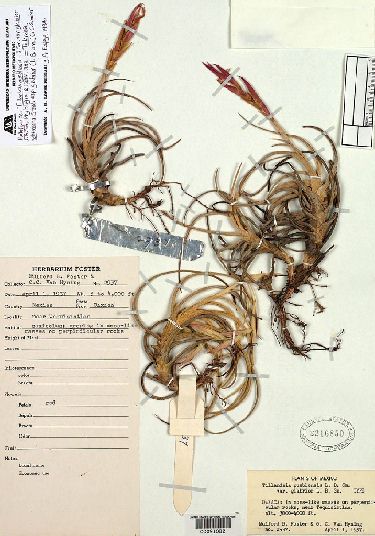
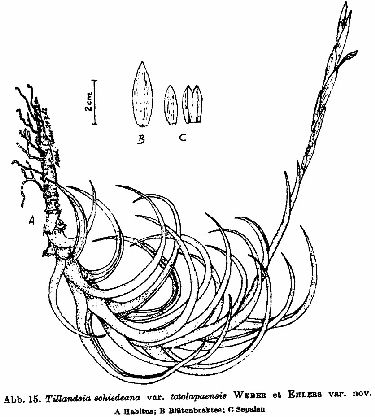
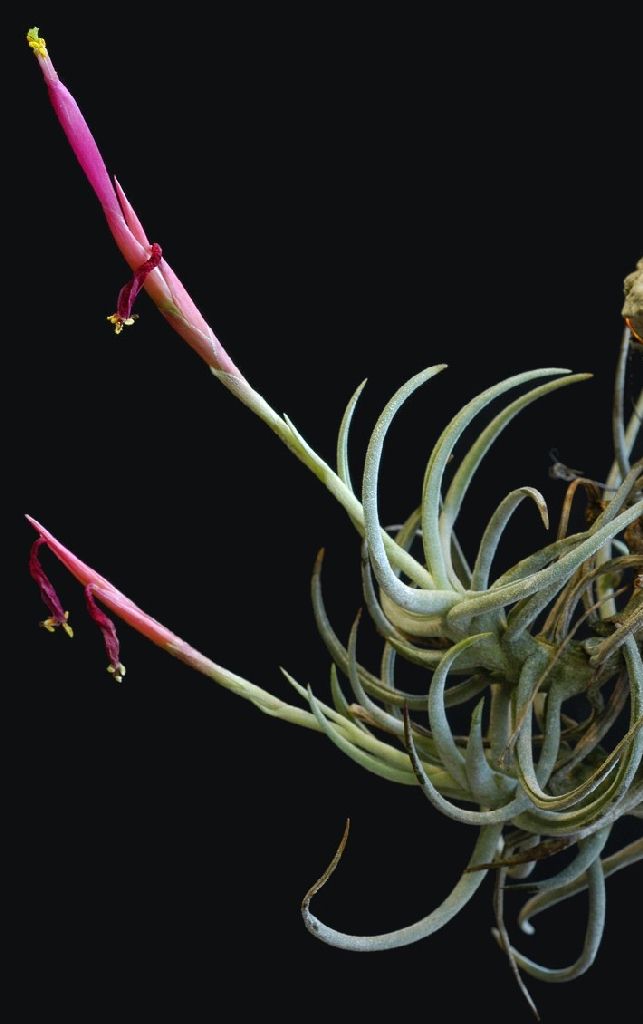
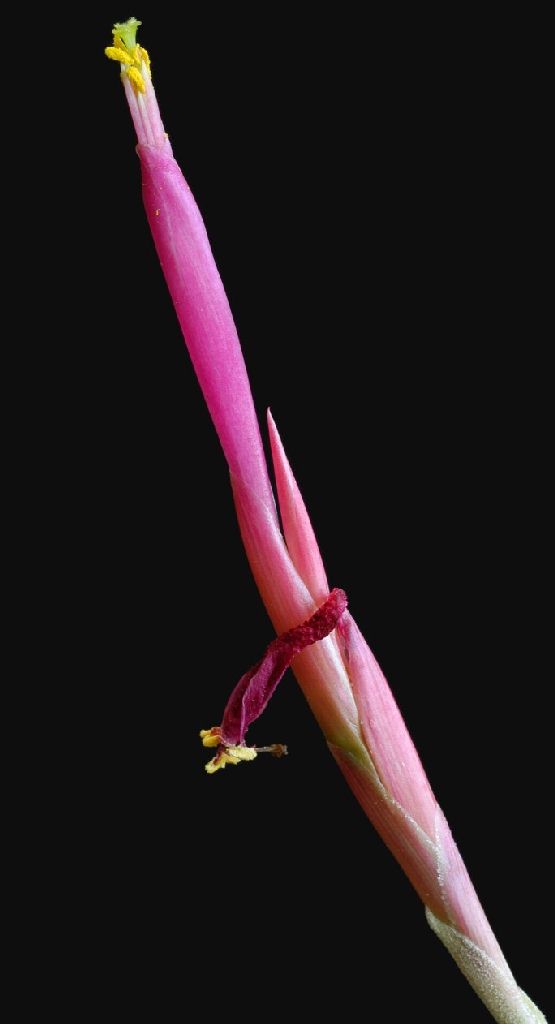
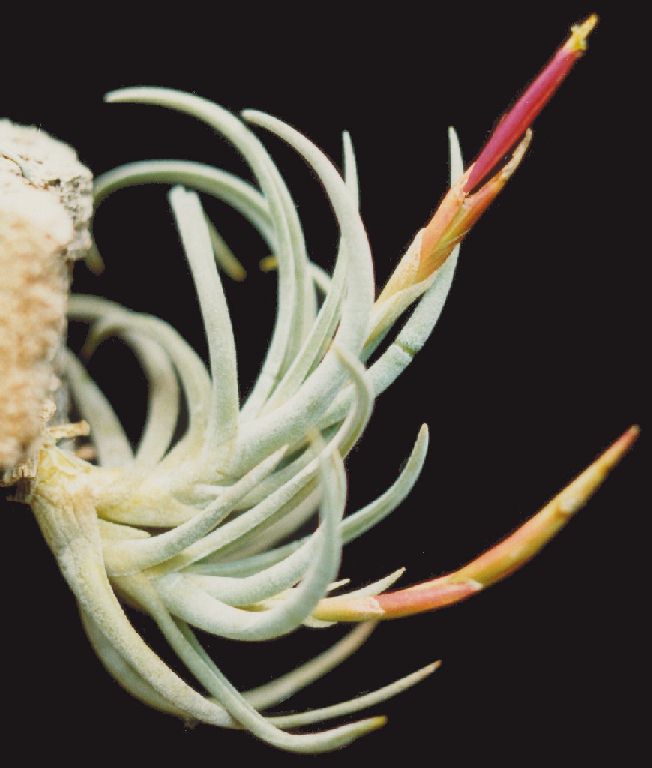
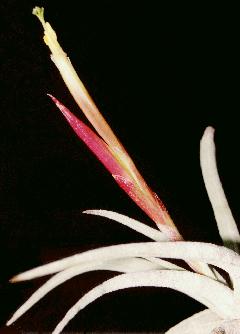
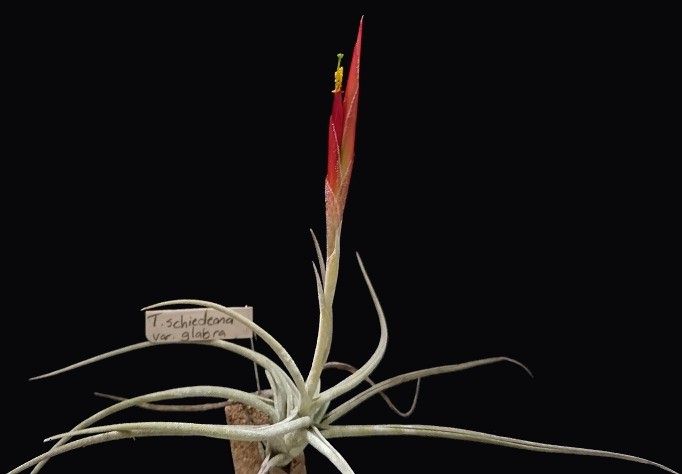
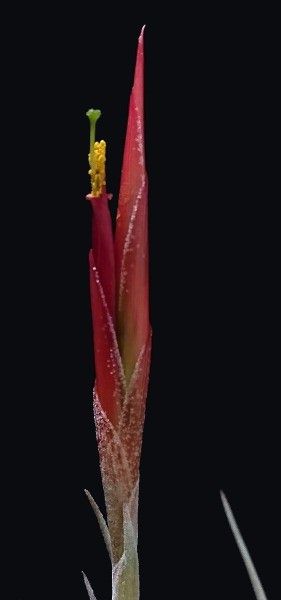
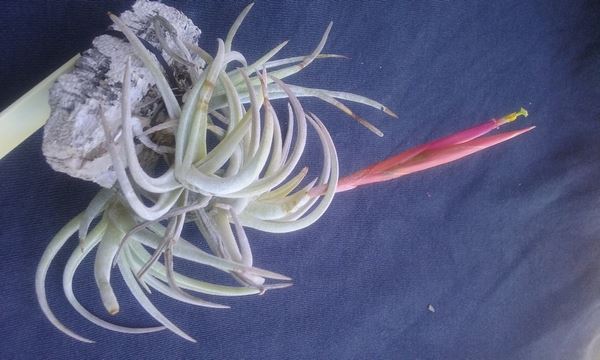
The following pictures are from a talk given by Derek Butcher. See DD0912 for full discussion.
"Everything went smoothly until Foster and Van Hyning found a plant in 1957 [P13 HERBARIUM SPECIMEN] near Tequisistlan in the District Tehuantepec of Oaxaca. This was described by L B Smith in Phytologia 6: 83, 1958 as T. pueblensis var glabrior where the terse description says “Differs from T. pueblensis by having floral bracts soon glabrous”. One would assume that the petals were blue in line with the type species. Alas, Gardner tells us that the description was based on a few dried specimens.
In 1981 Renate Ehlers found a plant near Totolapan in the district of Tehuantepec of Oaxaca and in conjunction with Weber published the name T. schiedeana var totolapanensis. [P14 DRAWING] Their diagnosis was that it differed from the type by having leaves secund, arcuate recurved and clearly fleshy succulent, much shorter than the inflorescence. BUT they also gave a full description. Petals were unknown but fragments indicated red spotted. The 1980’s was when C.S. Gardner was doing a review of Mexican tillandsias and had strong views in sorting them according to floral attributes. She saw that Smith’s “var. glabrior” was closer to a T. schiedeana and this was what she said in Selbyana 361-379. 1983
“Tillandsia schiedeana var glabrior (P 15-17 PHOTOS) is the correct name for an attractive small tillandsia that is well represented in the trade and bromeliad collections around the world. This subspecies occurs in large colonies on perpendicular canyon walls from Tequisistlan to Totolapan in the state of Oaxaca, Mexico at 900 to 1200 meters.





Dr. Lyman B. Smith described this plant originally as T. pueblensis var . glabrior from a few dried specimens in 1958. Without fresh flowers, the plant, with its thick, curved, gray-lepidote leaves and small, simple spike, appears similar to T. pueblensis. In 1983, Wilhelm Weber and Renate Ehlers described this same plant as Tillandsia schiedeana var. totolapensis (See below) from a living specimen collected in Mexico. Since Dr. Smith's varietal name has precedence it must be conserved even though the species epithet is corrected.
Although this subspecies is more closely related to T. schiedeana than to T. pueblensis, it is distinct from the former by several significant characteristics, most of which are associated with saxicoloy. For example, it forms large clumps of a single clone, and individual rosettes have both long, descending stolons and thick, upwardly secund leaves. These characteristics are often found in saxicolous species including T. pueblensis.
Tillandsia schiedeana subsp. schiedeana is widespread, and occurs from northern Mexico to northern South America. Specimens of this subspecies also occur sympatrically with subsp. glabrior. Specimens of the typical subspecies occur also in saxicolous forms. They do not, however, display modification of the typical spherical clumps of stellate rosettes with straight leaf blades joining the leaf sheath at a 90 degree angle. Similarities in inflorescence characteristics of the two taxa support conspecific classification, however, assignment to different subspecies indicates a greater difference than varietal classification does.
Pigmentation of the flowers varies between and within the two subspecies. A larger amount of red pigmentation is typical of the petals of subsp. glabrior with one-half to all of the petal lobes red, whereas in samples from six populations of the typical subspecies only a few specimens in each were found to have a small amount of red pigment at the base of the primarily yellow petals.” (P 18-19 PHOTOS)
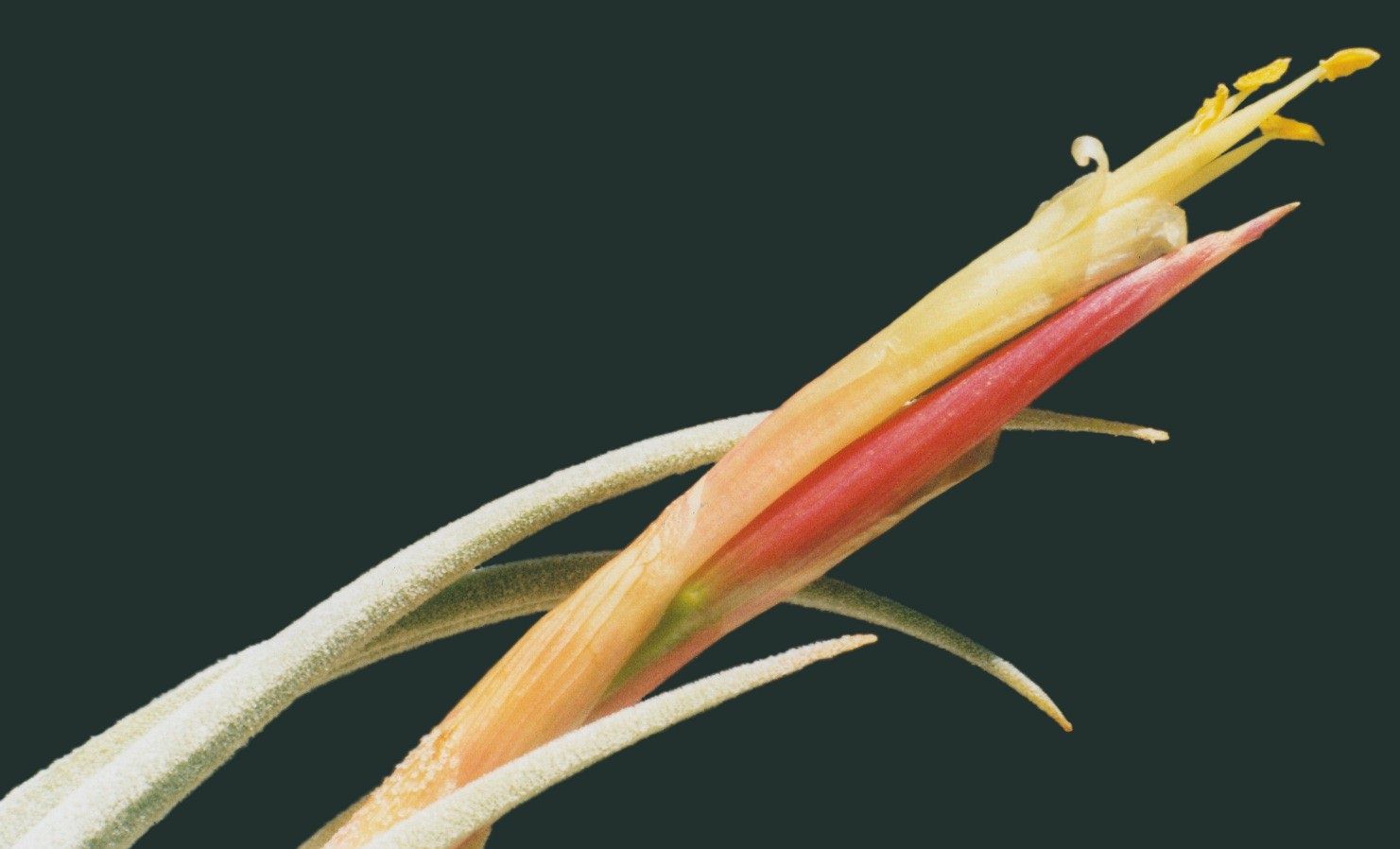
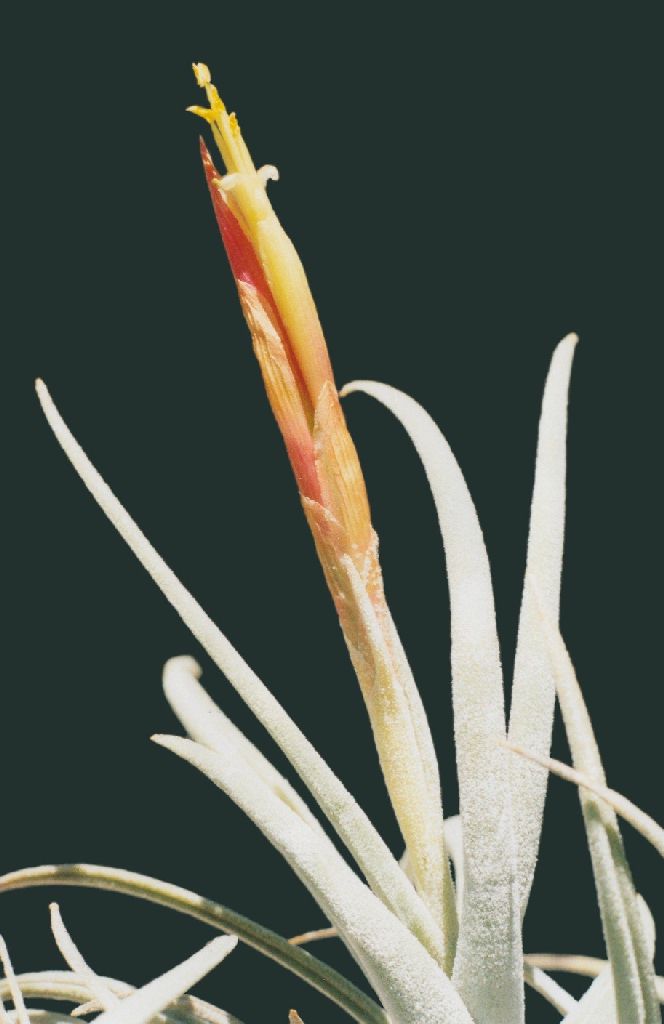
In Selbyana 25(1); 60. 2004 in a Checklist of Mexican Bromeliaceae by Lopez-Ferrari, Espejo & I. Ramirez we see Tillandsia glabrior (L.B. Sm.) Lopez-Ferrari, Espejo & I. Ramirez, comb. et stat. nov. But we see no attempt to describe this taxon promoted to species status so we are in the dark as to its floral attributes.
In trying to come to terms with this lack of information I have used the ICNCP rules to try to solve problems occurring in plants in this group in cultivation where collection data is missing. Perhaps the taxonomists are not prepared to investigate the possibilities of natural hybridization as suggested by Gardner’s findings. If we look at Acta Bot Mex 81: 71-147. 2007 “Bromeliad Flora of Oaxaca” we see that T. glabrior is endemic to the districts Tehuantepec and Tlacolula BUT we see that T. schiedeana can also be found in these districts.
If a ‘true’ T. glabrior had red petals then it is feasible that natural cross pollination is occurring causing the observation in horticulture that plants that look vegetatively like T. schiedeana can have a combination of red and yellow petal colours. Conversely you can have plants that look vegetatively like T. glabrior with the same odd petal colour depending on how back crossing occurred."